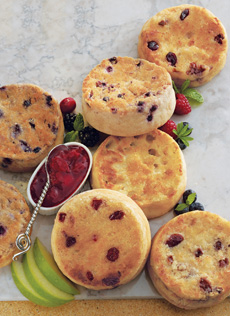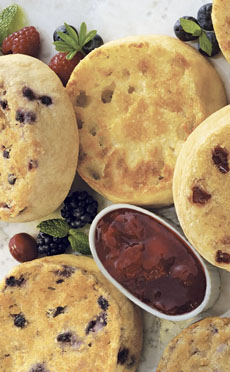A key difference is that Wolferman’s English muffins are more dense and two inches high. While both companies currently make a variety of styles (sourdough, whole grain, etc.), Thomas’ makes three flavors (cinnamon, honey and a seasonal cranberry) and Wolferman’s targets the gourmet market with more than a dozen flavors, from Apple Orchard, Cinnamon and Raisin, Chocolate Chip, Pumpkin Spice and Wild Blueberry to Cheddar Cheese and Sundried Tomato, among others. The company was acquired in January 2008 by Harry and David Holdings from Williams Foods, a direct marketer of specialty food gifts, that had acquired the brand from the Wolferman’s family. Williams had purchased the brand in March 1999 from Sara Lee, who in turn had purchased it from Fred Wolferman—great-grandson of Wolferman’s founder and the grandson of the creator of Wolferman’s English Muffins, in July 1986.
And see our review of Wolferman’s English Muffins, a NIBBLE Top Pick Of The Week.
Lifestyle Direct, Inc. All rights reserved. Photos are the copyright of their respective owners.
|

The Nibble Blog
The Latest Products, Recipes & Trends In Specialty Foods
The gourmet guide you’ve been waiting for. New food adventures are served up daily. Check it out!

Food Glossary
Our Food Directories Are "Crash Courses" In Tasty Topics
Your ultimate food lover’s dictionary packed full of information and historical references. Take a look!

Food History
Let the journey begin!
Learn about the history Of 1,000+ Favorite Foods & Beverages Let’s explore the history of your favorie goods together.Let the journey begin!


